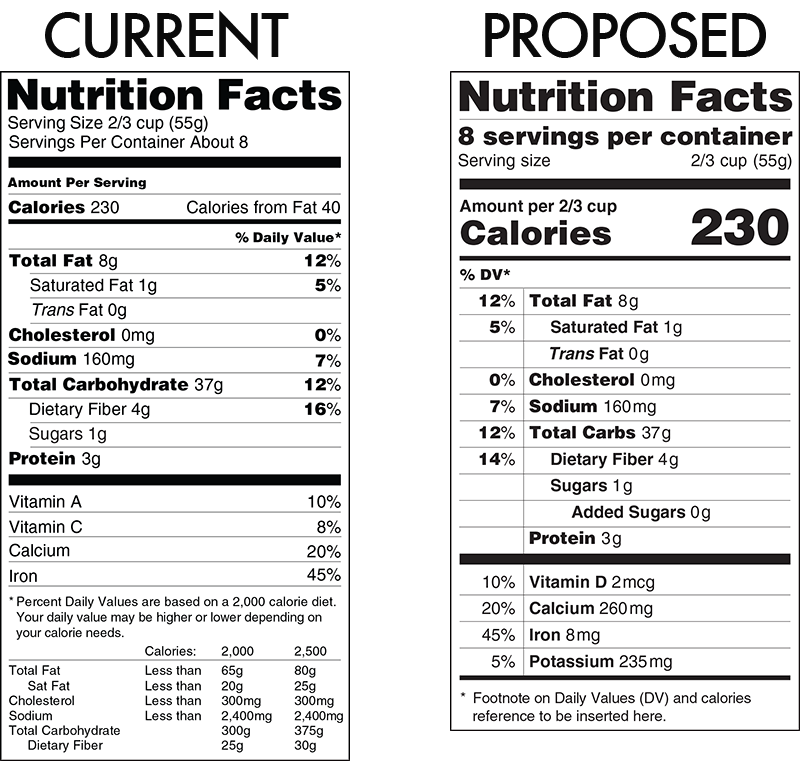FDA’s New Nutrition Label Emphasizes Calories, Serving Size, Added Sugars
 Earlier today, the FDA finally got around to unveiling the first major change to food nutrition labels in two decades. The new-look label contains mostly the same information as the current version, but with the addition of “added sugars” data, the loss of “calories from fat,” and more emphasis on total calories per serving and servings per container.
Earlier today, the FDA finally got around to unveiling the first major change to food nutrition labels in two decades. The new-look label contains mostly the same information as the current version, but with the addition of “added sugars” data, the loss of “calories from fat,” and more emphasis on total calories per serving and servings per container.
As you can see from the side-by-side example above, the two biggest changes — aside from flipping the percentages to the left of the column — are the increased prominence of the calories and the much larger and bolder information regarding servings per container. Additionally, nutritional info that is currently listed as “Amount Per Serving,” will have the actual serving size listed. In the above example, you can see that the proposed label now says “Amount per 2/3 cup,” as a further reminder that 2/3 of a cup is the serving size for this product.
An update that is not as immediately noticeable is the inclusion of an “added sugars” line. The FDA says this was important to include in the label because Americans eat 16% of their daily calories from sugars added during food production.
Meanwhile, the FDA is proposing to get rid of the “calories from fat” info.
“We know that the type of fat is more important than the total amount of fat,” says FDA scientist Claudine Kavanaugh about this change.
A non-cosmetic change to the labels, but one that would impact the data that appears on the nutrition panel, is the FDA’s proposal to update serving size requirements to reflect what people actually eat, not what they should be eating.
For example, a pint of ice cream is currently listed as 4 servings. The FDA proposes changing that to two servings per container.
One final new requirement is the inclusion of Vitamin D and potassium information on each label, as part of an effort to increase public awareness of how littel of each of these nutrients consumers are getting. Vitamin D is to be included because of its importance in bone health, especially among women and the elderly, while potassium helps to lower blood pressure and prevent hypertension.
Proposed Changes to the Nutrition Facts Label [FDA.gov]
Want more consumer news? Visit our parent organization, Consumer Reports, for the latest on scams, recalls, and other consumer issues.

